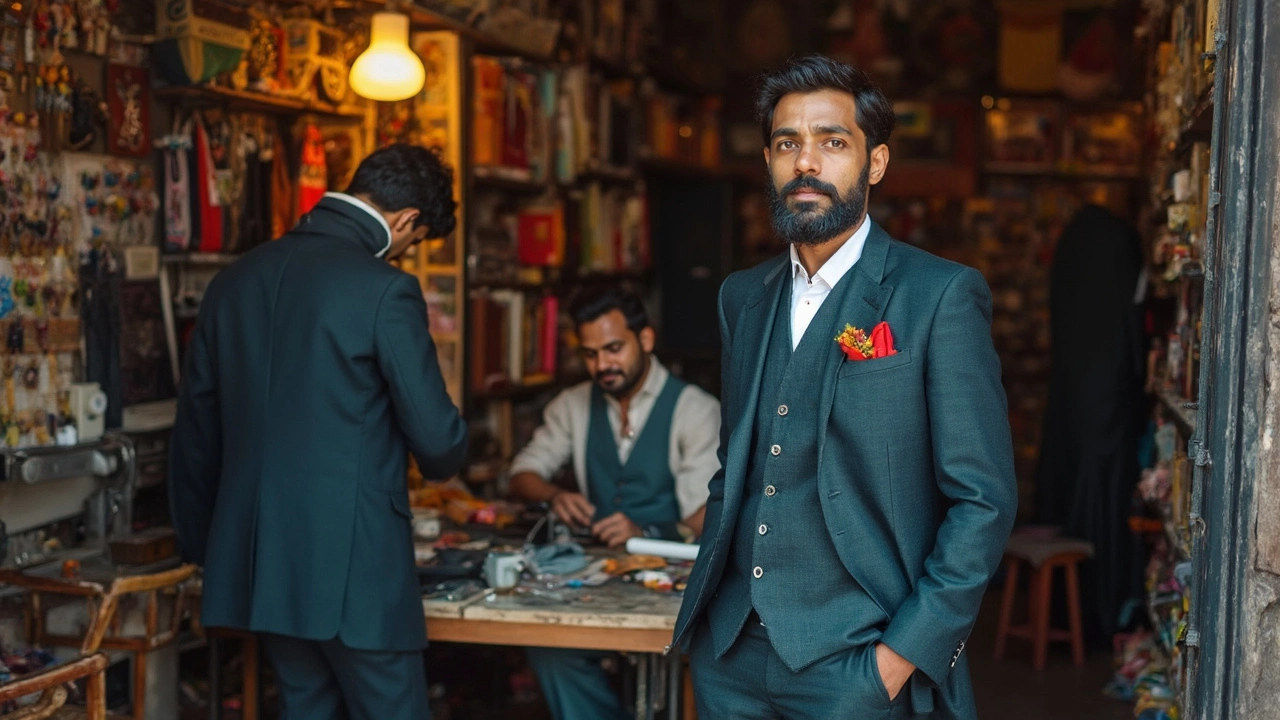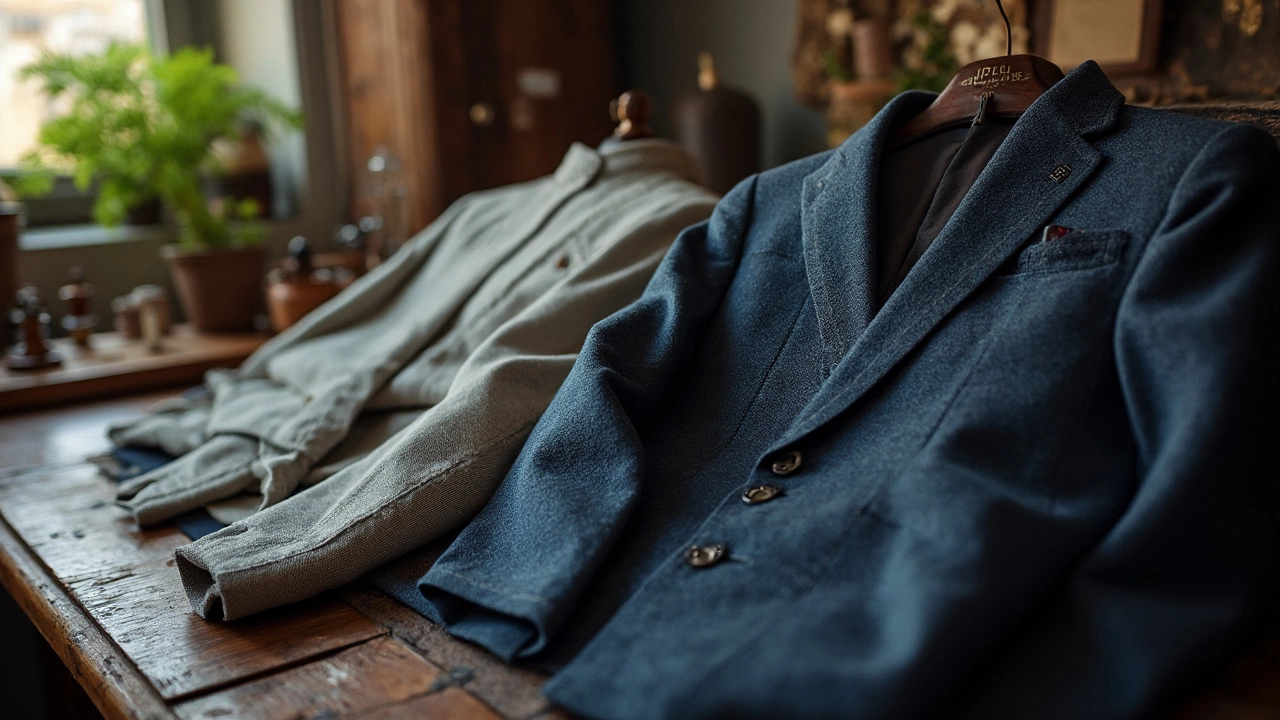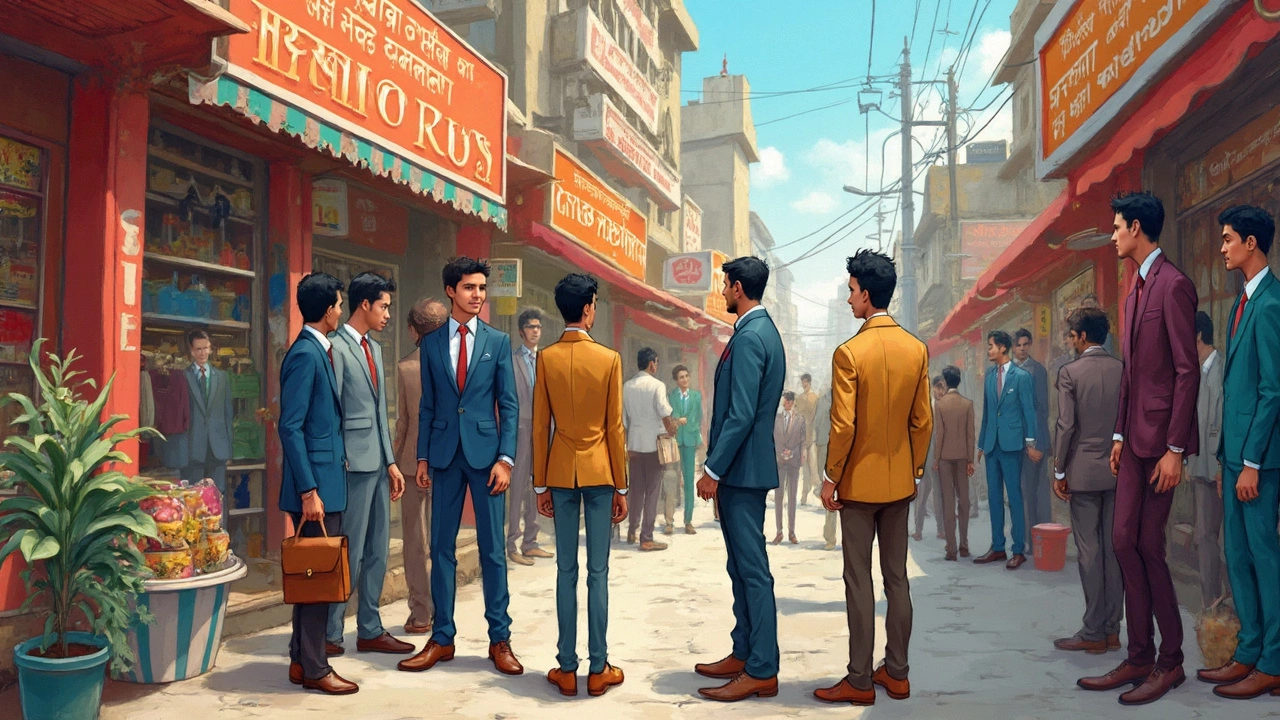Hand Sewn vs Machine Sewn Suits: Which Makes the Best Suit?

If you ever spent a small fortune on a suit, you know the thrill and anxiety of picking between hand sewn and machine sewn. Deep down, most people wonder: can a sewing machine match the old-world magic of someone stitching your jacket by hand? Here’s the honest answer — sometimes, but usually not. Hand sewing is a dying art that's both expensive and oddly personal. A strong machine, though, can still pull off jaw-dropping results in less time and for much less cash.
The Real Difference: What Hand Sewing Actually Means
Let’s crush the biggest myth: "hand sewn" isn’t just a fancy sales pitch. When a tailor hand sews a suit, they use nothing but a needle, thread, and endless patience. Every seam, every detail gets special attention. They can shape the fabric, make tiny adjustments for your body, and sneak in subtle curves and structure that a machine just can’t replicate. You might be surprised, but hand stitching isn’t always about making things prettier or showing off. It’s about how the fabric moves with you. For example, an expert in Naples will sew what’s called a "floating canvas" inside your jacket by hand. That means the jacket actually molds to you over time. Your armholes, collar, and lapels feel different—softer, more alive.
On the other hand, a machine can stitch faster than any human. Commercial machines lay down long, straight lines of stitching in minutes, not hours. The structure of a machine sewn suit tends to be stiffer. Most use glued “fusible” interlinings that keep the jacket in shape, but can feel less natural on your body. After a few dry cleans, these blends sometimes bubble up or lose their crispness. The hand sewn version holds up differently: it almost looks better as it breaks in—think about the way your favorite jeans just fit better after a few wears.
The wildest fact? Some luxury brands still sew parts of suits by hand, even when using machines for other sections. This isn’t just for looks: certain parts, like hand-attached linings, roll better and barely pull at the buttonholes. Tiny things like this set a bespoke suit apart, even though most people won’t see the work until they slip the jacket on.
Breaking Down the Price: Is Hand Sewn Worth the Money?
The price gap between hand sewn and machine sewn suits is jaw-dropping. Hand sewn suits from established tailoring houses in places like Savile Row or Milan can easily run several thousand dollars—think $3,000 to $8,000. The skill, hours (typically 40 to 70 total hours per suit), and materials justify the cost. You’re not paying for a brand name; you’re renting someone’s lifetime of expertise for a few days.
Machine sewn suits, especially in department stores and even wedding shops, are way less costly. Off-the-rack pieces are cut and stitched on assembly lines. You’re mostly paying for fabric and speed. For $300 to $800, you can step out in something that looks sharp, at least for a season or two. This can be great for teens needing prom suits or people who fluctuate in weight and don’t want to "commit" to one fit forever.
| Type | Average Price (USD) | Time to Produce | Fit Adjustability |
|---|---|---|---|
| Hand Sewn (Bespoke) | $3,000–$8,000 | 4–8 weeks | Maximum |
| Machine Sewn (Off-the-rack) | $300–$800 | 1–2 days | Limited |
| Made-to-Measure (Hybrid) | $800–$2,000 | 2–6 weeks | Moderate |
Some tailors offer a hybrid: machine sew the main seams, then hand finish critical parts. This middle-ground cuts costs but gives you a more custom fit—perfect for anyone who wants the best of both worlds without giving their credit card a panic attack.

Suit Quality: Stitching, Fit, Longevity, and What Really Counts
It’s tempting to think a hand sewn suit is always better, but let’s be brutally honest: not everyone needs one. If you want flawless fit and something uniquely yours, go hand sewn. These suits adapt to your posture, build, and even your quirks—maybe your left shoulder slopes, or you have a long torso. A real tailor can spot and fix things a machine simply ignores.
Machine sewn suits, though, keep getting better. Advances in sizing, fabric blends, and laser cutting mean even a $400 suit can look killer right off the rack. Some newer machines mimic hand stitches with "pick stitching" for style points. And for daily wear—work, weddings, parties—you might not notice a practical difference unless you really pay attention.
Where you will see the gap is over time. Hand sewn suits tend to last longer and handle repairs gracefully. They’re easier to adjust if you gain or lose weight. Machine sewn jackets, especially with glued parts, can warp or show wear more quickly. Dry cleaners love hand sewn because they bounce back after pressing. Look at your grandfather’s old suit: if you see stitches with tiny, irregular knots inside, it probably saw some real handwork.
The inside counts too. A hand sewn suit often has hand-set sleeves and lining, which move and flow as you walk. With machine sewn suits, you sometimes feel restricted—as if the suit is wearing you instead of the other way around. The secret weapon for hand sewn? A floating canvas layer. This isn’t glued down like cheaper suits, but stitched in so that the jacket molds to your frame. It’s one reason bespoke suits keep their shape for decades.
Who Should Choose Hand Sewn or Machine Sewn?
The real question is: what do you actually need from a suit? If you want the hand sewn suit experience—total personalization, flawless fit, old-school luxury—it’s worth saving for. Hand sewn suits turn getting dressed into a ritual. They’re for special occasions, or for people who know exactly what they want. These suits also shout subtle luxury: insiders know what to look for, and you’ll feel that confidence every time you button up.
But, if your budget’s tight or you’re looking for a new job, a solid machine sewn suit is smarter. Today’s off-the-rack options are shockingly good. You can find classic colors, strong wool, and flattering shapes almost anywhere. Plus, if you get a good tailor to tweak the fit, even a $300 suit can look much more expensive.
- Go hand sewn if you want a suit that’s truly yours and plan to wear it for years.
- Choose machine sewn if you’re buying your first suit, growing, or changing jobs often.
- Consider a "made-to-measure" suit—a halfway option that's mostly machine but hand-finished.
One helpful tip: no matter which you choose, invest in tailoring. A suit off the shelf becomes 10x better if someone skilled spends thirty minutes adjusting the shoulders, sleeves, and trouser length. Even machine sewn suits look ultra-premium after a few well-placed tweaks.

Hidden Details: What Actually Gets Done by Hand or Machine?
If you want to get nerdy about suits, it’s all about the details. Here’s what usually happens in each type:
- Hand sewn suits: Hand-padded lapels, hand-set sleeves, canvas linings floating free inside, non-glued (sewn) interfacing, hand-stitched buttonholes, and sometimes even hand-finished pockets.
- Machine sewn suits: Main seams done by machine, pre-made buttonholes, lining and interfacing glued or machine-stitched, and sometimes "fake" hand details added last for aesthetics.
Fun fact: Some luxury houses like Kiton or Brioni claim up to 30,000 stitches per suit—almost all by hand. A typical machine suit from a high street retailer clocks in below 5,000, with most critical parts glued. Notice the difference when you gently turn back the jacket lining or check how the sleeves are attached—the tiny, almost wobbly stitches are usually the hint that it’s handmade.
Another tip for spotting a hand sewn suit in the wild: look for the buttonholes. True hand-sewn buttonholes are a little imperfect, often slightly uneven, and almost always stronger than their machine-made counterparts. If they look "too perfect," you’re probably looking at a machine job.
If you ever feel overwhelmed, just remember: a suit—whether made by hand, machine, or a clever mix—is really about how you feel in it. How you stand out in a crowd. And that, honestly, is worth more than any label or stitch count.